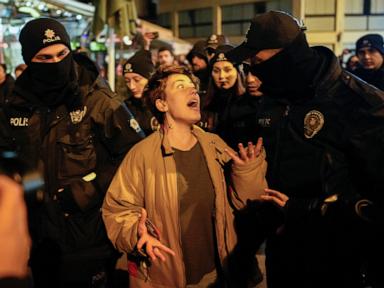ARTICLE AD BOX
THE dreams of Soviet engineers for a turbo train had died down but the vision of the future sat rotting in the yard of the factory for years to come.
Engineers once imagined we could be commuting in the morning on jet-powered trains like the SVL, with its elegant, rounded looks and two massive engines fastened to the roof.
 TIHOMIROV.SU
TIHOMIROV.SU Getty
Getty TIHOMIROV.SU
TIHOMIROV.SU Alamy
AlamyNow instead the futuristic looking locomotive sits slowing disintegrating in a factory yard in Kalininsky, St Petersburg.
The 50 ton jet-powered train could reportedly hit speeds of around 180mph as it hurtled along the tracks powered by its jet engines.
But it was believed with the right track the 28 metre train car could have exceeded 220mph.
In the 1960s, Soviet passenger trains travelled at an average speed of around 40mph.
And when the US had launched their ambitious project of a jet-powered train, the USSR couldn’t fall behind the competition.
The American M-497 Black Beetle was built in 1966 – hitting speeds of 184mph.
The Soviet engineers were then tasked to build an experimental train which would rival the US model.
The experimental train was built in the 1970 by researchers at Kalinin Carriage Works.
Designers took a standard train car and attached to the roof a pair of engines from a Yak-40 passenger plane.
The superfast train is reported to have performed well in tests – reaching well towards speeds of 200mph.
And this was much faster than other contemporary high speed trains, such as the original Japanese bullet train, the Shinkansen.
Russia‘s turbo train – officially dubbed the High Speed Laboratory Car – was unveiled in October, 1970.
It would be run on an experimental testing track under the control of engineer Mikhail Nepryaev and aircraft mechanic Alexei Lozov.
Five years of testing followed which saw the super speed train even run on some public stretches of railway as it roared on.
The All-Union Research Institute of Carriage Building boasted the train could have hit speeds of up 223mph.
And they hoped their train could have fronted a new generation of railways criss-crossing the Soviet Union.
But as the Communist block slowly began to eat itself, such ambitious plans were shelved and put on ice.
The SVL stood idle and abandoned at a station near Moscow.
It started to rust away – taking with it Russia‘s dreams of a high speed jet powered rail network.
There were problems with the train’s stability at high speed, but the designers were confident they could overcome this.
The commercial use of the experimental train was also hindered by the state of Soviet railways which were ill-fitted to provide travel speed of over 86mph.
And there were also issues with noise from the roaring jets as it passed through densely populated areas.
The solutions to these problems were impractical or high-cost, which led to the halt of the project.
The dreams of the jet train died, and soon the rusting wreck was moved to the factory yard in St Petersburg.
The train however after sitting falling to pieces for decades was eventually salvaged and given a fitting memorial.
The front was chopped off and repainted – being installed on a plinth outside the Tver Carriage Works.
The American jet-powered train was short-lived as well – with the RDC-3 being scrapped in 1984.
But the US eventually succeeded in revolutionising the rail industry with the even more impressive LIMRV built in the 1970s – eventually hitting speeds of 256mph.
It set the world speed record for vehicles travelling using conventional rails.
The future however seems to have moved past the dreams of jet trains.
And instead, designers are looking at “maglev” technology such as Elon Musk’s plan for the Hyperloop.
 TIHOMIROV.SU
TIHOMIROV.SU There were plans to turn the train into a cafe at one point but they fell through
There were plans to turn the train into a cafe at one point but they fell through.png)
 9 months ago
4
9 months ago
4








 English (US)
English (US)